#Gambero Rosso Top Italian Wines
Text
Gambero Rosso Top Italian Wines!
Gambero Rosso Top Italian Wines!
Story and photos by Dr. Michael Lim The Travelling Gourmet TM
Copyright all rights reserved
The indomitable and irrepressible Travelling Gourmet TM celebrates the…
MARVELLOUS return of Gambero Rosso’s
Top Italian Wines Roadshow to Singapore with
fine wines from 52 illustrious Italian wineries
– Singapore is the first country in Asia to host the roadshow after a two-year hiatus!
– Three…
View On WordPress
#Chianti Classico#Dr. Michael Lim is The Travelling Gourmet TM#Gambero Rosso#Gambero Rosso Top Italian Wines#Marco Sabellico#Montepulciano d&039;Abruzzo#Prosecco#Puglia Primitivo#Sicilia#Vini d&039;Italia Wine Guide
0 notes
Link
#GamberoRosso#ItalianChamberofCommercefortheUK#italianiaLondra#Londraeventi#RoyalHorticulturalHalls#TourTreBicchieri
0 notes
Link
Exterior of Ferraro’s Ristorante. (Photo Courtesy of Ferraro’s) FERRARO’S RISTORANTE AWARDED WITH TOP WINE LIST RATING BY GAMBERO ROSSO – GLOBAL AUTHORITY ON ITALIAN FOOD, WINE Ferraro’s Ristorante, the fine-dining establishment known for its
0 notes
Text
Vienna restaurant reviews
ORIGINALLY POSTED IN 2018
A quick update from my last trip to Vienna:
Silvio Nickol Gourmet Restaurant- hmm. I can comfortablly say that in my view it is no Steireck (which is a similar price) or even Konstantin Filippou (lower price point). The room is not my taste at all (a bizarre floating egg against a rock crystal wall, and a continued egg theme throughout). There were two dishs out of the nine we got that were phenomenal- the foie gras and the jerusalem artichoke. These dishes were stunning, up there with my top dishes in life and days later I am still dreaming about them. But the rest either fell flat, or I really didnt like them. The chef likes a richness in his dishes and particularly in his sauces that is at times overwhelming. He also likes to pack certain very strong herbs into some dishes, so if you do not like the herb, it ruines the rest of the dish. However, the major standouts are the wines, we went with the pairing, which was lovely, and more generally their wine list is great. And the service- I have rarely had such lovely and uncomplicated service in years.
Il Melograno- In Vienna in the center of town the restaurants, including Italian ones, can end up being awful tourist traps. This place is far from it, and even if some tourists make it here, that has no affect on the quality of the food. We started with the Gambero Rosso which were outstanding, and the beef carpaccio which was very nice. For mains we had the Cacio e Pepe which was not traditional in its ingredients, but was absolutely delicious, and the burrata ravioli, also so lovely. We unfortunately were too full to order dessert. The wine list is a bit challenging- if you want a bottle under 200 Euro, you are not left with many options.
Mamamon- it serves up some of the most legit Thai food I have had outside of Thailand. We had the mother-in-law's egg, which was lovely, a special summer dish (a salad of tart green apples and toasted coconut) that was heaven, the duck Laab which was great and perfectly spicy, and the Pad Kra Phrao Laad Khao, which was outstanding. We could not get any curry or the fish cakes- they had already run out.
The only disappointment was the the banana sticky rice, it wasn't at all exciting, and no replacement for a good mango sticky rice in Bangkok. Stunning food for anyone who loves authentic Thai street food flavors.
Asia Jasmin- its a hike, 45 mins outside of the city to the northeast, but there is reason to make the trip. This is the spot that all important Chinese delegations come to when visiting the city. The place has no charm or character, and that is totally fine. You come for legit Chinese food and that is what you get. We ordered up a storm of dim sum, all of which was great, then a Peking duck which was tasty, and the pancakes were nice and thin (it wasn't as good as you would get in say Hong Kong or even a top Chinese restaurant in NY or London, but still very satisfying), a fabulous roasted eggplant dish that isn't on the menu (bring a mandarin speaker with you if you can), and a lovely large steamed turbot. We also got a whole bunch of other small dishes, and the total price came to 35 Euro a person. Wonderfully reasonable and wonderfully authentic.
Momo- Wow, this pizza is fantastic. Light, thin crust, great, creative toppings but still respectful to Italian tradition. In a city with lots of pizza, and many pizza places I have tried, this stands out as my favorite so far.
0 notes
Text
Gran Caffe L'Aquila Named One of the Top Italian Restaurants in the World
Congrats to @GCaffeLaquila Named One of the Top Italian Restaurants in the World by @GamberoRossoINT 🇮🇹
Philadelphia’s Gran Caffe L’Aquila named one of the Top Italian Restaurants in the World and the Top Italian restaurant in Philadelphia by a respected global Italian food & wine media program.
Gran Caffè L’Aquila is the first restaurant in Philadelphia selected by the guide as one of the top restaurants in the world of Gambero Rosso. The award ceremony took place recently at the Italian Embassy…

View On WordPress
#Gran Caffe L&039;Aquila#Italian restaurant in Philadelphia#Top Italian Restaurant in Philadelphia#Top Italian Restuarants
0 notes
Text
Banville Wine Merchants: Celebrating Family With Every Bottle
Now more than ever, many are seeking to transform a simple toast into a special occasion. And what better way to celebrate the joys of life and the importance of family, both inherited and chosen, than with a bottle that honors generations of artisanship, superior quality, and a commitment to the land?
Family-owned Banville Wine Merchants (BWM), founded in 2004 by Lia Tolaini Banville, is a national importer with a passion for fine wines and spirits. A strong female leader in a male-dominated field, Lia sought to create a modern, independent business that pays homage to legacy estates, champions small producers, and boasts a label for every occasion. Honoring her deep connection to Italy with a diverse collection of elegant wineries, Banville has extended her import portfolio to over 50 hand-picked selections, stretching from the “Great Boot” to South America. So this season, raise a glass to great grapes and familial ties with a bottle from this impressive roster.
Lia Tolaini Banville (above), a strong female leader in a male-led industry, founded Banville Wine Merchants in 2004.
A Sumptuous Road Trip Through a Terroir That’s as Diverse as Italy Itself
Journeying through Italy’s Chianti Classico region brings wine lovers from the north near Florence down through the Chianti Classico communes to the southernmost commune of Castelnuovo Berardenga, which is just seven miles east of Siena and 18 miles north of Montalcino. This area of Chianti Classico is known for producing wines of strength, elegance, and longevity and was the motive for choosing the Montebello and Vallenuova vineyards as the perfect home for Tolaini. Capitalizing on the varied elevation of the property’s natural, south-facing amphitheater, Pier Luigi Tolaini planted high-density vines in the prized Galestro soil and built a state-of-the-art winery in a renaissance Tuscan villa on the property. He understood the great potential that this land possessed and knew it was where he would realize his dream of making world-class wines.
Sustainable and organic farming practices are an important focus at Tolaini, as is showcasing Tuscany’s native variety, Sangiovese, with the estate’s single-vineyard Chianti Classico Gran Selezione and Tre Bicchieri-winning Vallenuova Chianti Classico. Pier Luigi had a great passion for Super Tuscans as he loved Bordeaux and the juicier Napa wines of the mid-1990s. His flagship wine, Picconero, is made from Cabernet Franc and Merlot and continues to garner rave reviews.
Tolaini epitomizes the concept of “family business” and today Pier Luigi’s daughter, Lia Tolaini Banville, is running the estate and preserving her father’s legacy while bringing new ideas and innovation, all while honoring the distinct terroir of Castelnuovo Berardenga.
Tolaini sits within the Chianti Classico area, known for producing wines of strength, elegance, and longevity.
Lia launched Donna Laura Wines in Castelnuovo Berardenga in 2004 to honor the legacy of her beloved aunt and mentor, Zia Laura. With each bottle, Lia captures the essence of conviviality, the Italian tradition of family together at mealtime. Wine is a part of each family meal and is as vital as bread and salt. Focusing on sustainable and organic farming practices that forgo harmful chemicals to insure a vibrant ecosystem, Donna Laura wines are an expression of the native Tuscan varietal, Sangiovese. Balanced and approachable, these wines are ideal for everyday enjoyment and a reminder of family and food and how they are synonymous at the Italian table.
Traveling from central Italy to the mountainous countryside of the northeast, at Cantina Terlano in South Tyrol each varietal is aged to optimization, whether that takes years or even decades. Here, winegrowing was introduced in pre-Roman times, the land long prized for its sunny climate and location above the floodplain. One of the oldest cooperatives in Italy, many growers and their families have worked with Terlano for over 100 years. Terlano is known for producing wines with incredible aging potential. The wines’ longevity is in part a result of the combination of the soils’ high mineral content –– Terlano’s vineyards are nestled within a rich volcanic rock, its porosity ensuring optimal soil drainage –– and old vines, as well as the rigorous selection of vibrant, fully mature grapes. The Selections are often held in large wooden barrels and left to age on the lees before bottling, allowing each to blossom into a wholly unique character and complexity.
Tradition and time-honored relationships, forged over almost two centuries of craftsmanship, are the pillars of success at Farina Wines. Located in the heart of Valpolicella Classica, the original historic region of Amarone and Ripasso winemaking in the Veneto, Farina is owned by Claudio and Elena Farina, two cousins who represent the third generation of this winemaking family, with the guidance of Sandro, Claudio’s father. With an ideal climate for grape-growing, thanks to the moderating influence of nearby Lake Garda and the fresh breezes from Monte Baldo and the Monti Lessini hills, Farina is well known for producing velvety, rich Amarone wines and vibrant Ripasso blends. All of Farina’s wines are made from varietals that are indigenous to the Veneto, including Corvina, which is known as the “queen“ of grapes here. Corvina, with its thick skin and loose bunches, is particularly well suited to the region’s traditional appassimento technique. After careful selection in the vineyard, the grapes are dried for a few months in a special room called a “fruttaio,” then gently pressed. Fermentation follows in stainless-steel tanks and then the wine ages in large, Slavonian oak barrels for a minimum of 24 months. This long, traditional winemaking process produces the signature Amarone wines that Farina is famous for — distinct, with a sophisticated structure that balances the traditional velvety, rich, unctuous beauty of this wine with a modern freshness.
Farina wines balance the traditional velvety, rich, unctuous beauty with a modern freshness.San Salvatore 1988 sits within Cilento National Park in the Campania region of southern Italy. The estate’s rich biodiversity, enhanced by its proximity to the sea and high-altitude vineyards, together create an ideal environment for crisp whites and expressive red wines made from varietals like Falanghina, Fiano, Greco, and Aglianico, which were originally introduced to the region by the ancient Greeks. Launched in 2006 by entrepreneur and hotelier Giuseppe Pagano, who named the project after his son, Salvatore, born in 1988, San Salvatore 1988 fuses the latest in winemaking techniques with organic sustainable farming — no artificial products or chemicals. Its power supply is from an onsite facility that helps to reduce the winery’s carbon footprint. Roaming the vineyards is a herd of 650 bufala (buffalo that supply milk for the Pagano family’s historic mozzarella production) that provide an all-natural fertilizer that aids in the integrated biodynamic cycle of complete recovery of the land. San Salvatore’s Pian di Stio Fiano has received the coveted Tre Bicchieri award from Gambero Rosso for the three most recent vintages.
A unique Mediterranean paradise with a strong and independent spirit, Sardinia has been home to Mario Pala and his family for many generations. Since 1950, Mario’s family has grown grapes on their estate in southeastern Sardinia in the town of Serdiana. Their eight vineyard sites encompass a wide range of terroirs from limestone hills overlooking the sea to sandy plots located just a few miles from the shore. The Pala family is passionate about making wine using organic farming practices that reflect the importance of terroir, tradition, and respect for the environment. A champion of native Sardinian varietals like Nuragus, Monica, and Bovale, Pala is also well known for its refreshing Vermentino and seductive Cannonau wines that honor the distinct terroir of this extraordinary island.
A World Apart
The MacDonald family and the te Pā team challenge themselves to champion new techniques of sustainable water management and soil regeneration.
A newer addition to the BWM family, New Zealand’s te Pā Family Vineyards was founded by Haysley MacDonald, who traces his ancestry to the early Māori settlers who landed in the Wairau Bar region some 800 years ago. In 2003, MacDonald transformed the family farm into vineyards, with the flagship Marlborough estate extending from the Lower Wairau Valley to newer plantings in the Awatere Valley. At the Seaside Reserve vineyard in the Lower Wairau Valley, resilient vines and a frost-free environment enable an earlier ripening of grapes, yielding crisp Sauvignon Blanc and flavorful Pinot Gris. At the Redwood Hills estate vineyard in the Awatere Valley sub-region, clay and stony loam soils produce vines with deep roots that pull from the coastal influences and sunshine to produce a distinctive white wine. As kaitiaki (stewards of the land), the MacDonald family and the te Pā team are committed to conservation, challenging themselves to champion new techniques of sustainable water management and soil regeneration.
Several hours and continents away, the family-run Argentinian Andeluna winery has adopted a similar approach to honoring the land. Located on the rocky terrain of Gualtallary, Tupungato, Mendoza at the foot of the Andes, the winery’s name merges the words ANDE (the Andes) and LUNA (moon in Spanish) to evoke passion and magic, its high altitude literally elevating the label above all others. Initially founded in 2003, the Barale family-owned winery utilizes Gualtallary’s altitude and calcareous soil to produce reds with intense fresh and fruity expression. Focusing on heritage wines that capture the area’s unique terroir, the family has produced some of Argentina’s top Malbec and Cabernets.
Ultimately, what shines through in each of Banville Wine Merchant’s many producers is a commitment to community and a passion for locally sourced, lovingly cultivated vines. But no matter what your mood or desired flavor profile, there is something for everyone in Banville’s diverse portfolio. Maybe even a pairing for your next family get-together.
This article is sponsored by Banville Wine Merchants.
The article Banville Wine Merchants: Celebrating Family With Every Bottle appeared first on VinePair.
source https://vinepair.com/articles/banville-wine-merchants/
0 notes
Text
ELENA FUCCI: A REVOLUTIONARY IN THE SOUTH OF ITALY
It’s no secret that the North and the South of Italy have a bit of a rivalry. We won’t get into the specifics, but it’s a very real thing. I myself have never been to southern Italy. A few years back I took an incredible trip through Rome, Milan, Chianti, and Cinque Terre. My paternal grandfather’s family hails from the south, so a trip is most certainly in order. His family was from Potenza, a town in the region of Basilicata. I remember one time as a kid, I was at an Italian restaurant with my family. You know the kind with paper placemats? On the placemat was a map of Italy, and Potenza, my family’s town, was on the map! There began my love affair with Italy.
Basilicata: Should I Stay or Should I Go?
Basilicata is not one of the more well-known regions of Italy. It’s a mountainous, landlocked, under-the-radar area that just so happens to make some incredible wines. We’ll get to that soon enough. In Basilicata, there are not a lot of commercial opportunities or ways to grow wealth. The region and its aging population lack an entrepreneurial spirit. Many young people leave Basilicata and go to other parts of Italy to find opportunities. It’s an unspoken (or even a spoken) rule that if you want to make something of yourself, you travel to the North or abroad to start your business.

I recently sat down (via Zoom) with Elena Fucci, owner and winemaker at Elena Fucci and Laura Donadoni (aka the Italian Wine Girl), an ambassador of all things Italian wine. In this hour we learned the story of how Elena defied the odds, stayed in her hometown, and built a successful business and wine label.
Barile: The Heart of Basilicata
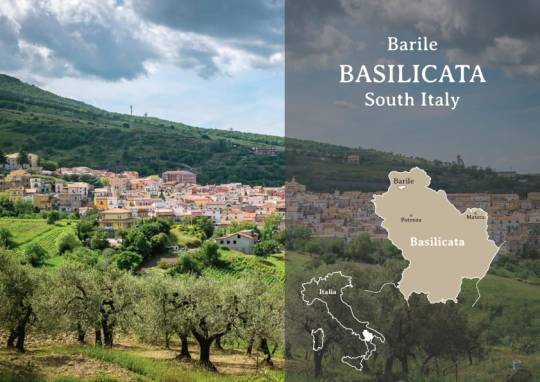
Elena hails from Barile, a town of 1,500 people in the Vulture area of Basilicata. Her father, grandfather, and great grandfather all grew and sold grapes, but they never made wine. The house Elena grew up in is surrounded by those same 6 hectares of vines her family tended. Her parents, both teachers, were near retirement, and the plan was to sell their vineyard and home, in the center of the vineyard. At 67 years old, the vines are the oldest in Barile. The idea was that they’d sell the property and give the money to their daughters to be able to start their lives elsewhere. Where there was more opportunity. This was not an easy choice, but it was the sound, prudent choice.
The Revolution of Elena
In 2000, Elena was studying genetics and engineering at college in Pisa. It was at that time that Elena got wind of her parents’ plan to sell her childhood home and property. Without hesitation, she changed her schooling focus to viticulture and enology (the study of wine and of grape growing). This was the moment. The moment when everything shifted. Elena was not ready to let go of the special place where she grew up and the beautiful vines surrounding it. She believed strongly that it had a future and she wanted to be a part of it. At the young age of 18, she made the revolutionary decision to stay in Barile and to give her family grapes an identity.
The Importance of Legacy
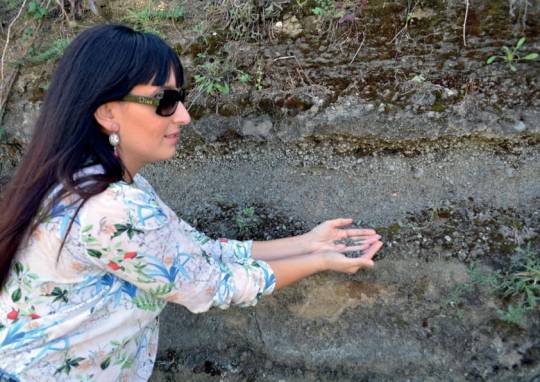
With the weight of her family’s legacy on her shoulders, Elena started making wine with her family’s grapes under the Elena Fucci wine label. As we went through the interview, Elena started tearing up a bit. It was quite sweet and also moving. I saw that the importance of what she did was not lost on her. The first Elena Fucci vintage of 100 cases was in 2000. It was all still an experiment at that point. Her first meaningful, commercial vintage was in 2004 when she made close to 600 cases. Elena now vinifies all the grapes her estate vineyard provides and no grapes are sold. They’re now making 2,000 cases annually, whereas by law she can produce about double that, based on the size of her vineyard. But Elena intentionally limits yields (through winter pruning) in order to keep quality high. In the vineyards, Elena’s grandfather, at 94, can be seen tending the vines and even driving a tractor!
Aglianico: The Star of the South
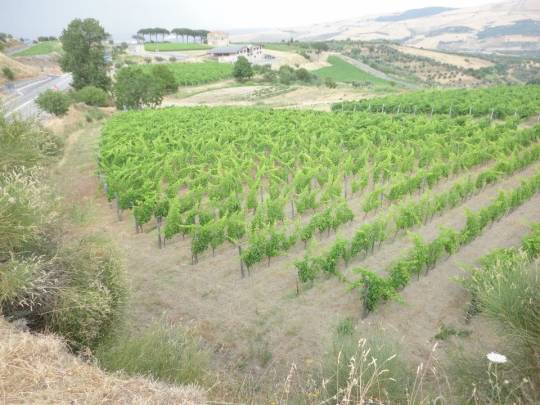
Aglianico is the dominant and well-respected local red grape, frequently referred to as the “Barolo of the South”. Found in both Campania and Basilicata, the grape thrives in the Vulture area, known as Aglianico del Vulture, Basilicata’s only DOC wine. Mount Vulture is an extinct volcano to the north of Potenza. This volcano left stratified soils with lava residue, debris, and ash, giving a graphite note in the glass. Aglianico serves up heaps of tannins and is the last to ripen in any vineyard it is in. Here at Elena Fucci, her vineyards are high altitude. The highest in Vulture, at 600m (approx 1800 ft).

Aglianico harvest and Aglianico wine production
One Singular Sensation
Elena makes only one wine: Titolo. One vineyard, one grape, one label. The only variable is the weather. You expect wine from the south of Italy to be bold and ripe fruited due to warmer temperatures and endless sunlight. Some say the wines of the south are less elegant. Enter Titolo. The wine has been awarded the coveted top Tre Bicchieri award by Gambero Rosso an impressive 15 times.
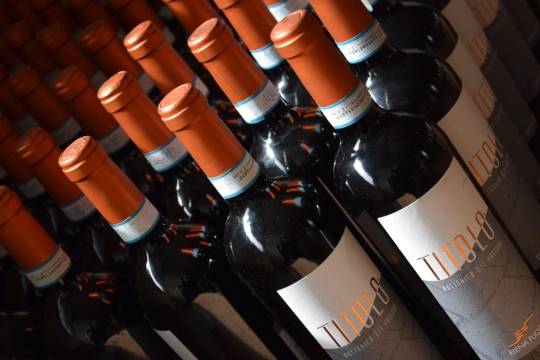
Elena Fucci Titolo 2016 Aglianico del Vulture DOC
Italy in a bottle. The tension/juxtaposition between finesse and rusticity is palpable. Classic Aglianico aromatic notes of sour cherry, plums, and balsamic. Plus, a soft floral through-line of sweet violet petals. Smokiness abounds, presumably from the use of smaller 200L barrels for aging. On the palate, we have a wine that is as dry as can be, yet there is a dichotomy of the sweet floral and balsamic notes. Quite a stunner. To be enjoyed with lamb or other grilled meats or perhaps some aged cheeses.
Originally Published Here: https://monarch.wine/elena-fucci-a-revolutionary-in-the-south-of-italy/
0 notes
Text
Josko Gravner: The Sprudge Wine Interview
It got here as such a aid to lastly set eyes upon the Collio hills (Brda in Slovene) on the border of Friuli and Slovenia, seemingly undulating endlessly into the space. The sheer distinction of saturated shades of inexperienced on a transparent day is a novel sight, and a marked distinction from the industrialized viticultural areas round a lot of the remainder of Northeastern Italy. This was earlier than Coronavirus modified life drastically in Italy, and certainly all over the world.
We have been positioned on the Italian facet of the border in a hamlet named Linzuolo Bianco, nestled in Gorizia’s Oslavia district; a grapevine-friendly microclimate that at this level in historical past is known for its prolonged skin-contact orange and amber wines. Residence to the likes of Dario Princic, Radikon, Fiegl, and La Castellada, this tiny city touts top of the range. However to me, if requested to choose probably the most enigmatic and esteemed winemaker and farmer of the few, from the mid-’80s to this very day, it must be Josko Gravner.


Josko Gravner. Picture by Sam Youkilis.
Throughout the pure development of fashionable items of tradition struggling the lack of their idiosyncrasies over time, orange wine (Gravner prefers the time period “amber wine”) and wines made in amphorae have grown extra ubiquitous—to not point out fashionable—over the previous few years. In flip, winemakers worldwide have this client demand by turning to orange wine, and the vinification methods related to it. All of the whereas Josko Gravner has inadvertently maintained his legacy as a pioneer. He’s popularly thought of the primary winemaker exterior of the nation of Georgia to make skin-contact wines in amphorae, all of the whereas persevering with to innovate and depart his craft in a relentless state of metamorphosis.
Gravner grew up the place he continues to stay and work as we speak. He joined his household enterprise within the ’70s and have become an acclaimed winemaker by the ’80s after modernizing his cellars and growing manufacturing—regardless of his elders’ recommendation. After a visit to California in 1987, his world was turned the other way up out of sheer disappointment from the industrialization and commodification of wine that he’d witnessed. This was a turning level for him as a winemaker. He eliminated all nearly all of trendy know-how from his cellars and farm, reconsidered his agricultural methods, and by no means regarded again.


In 1996, an incredible hail storm-ravaged all however roughly 5% of his Ribolla manufacturing, and he took the chance to conduct an experiment. He vinified 20 hectoliters with prolonged pores and skin macerations and with out inoculating the wine with chosen yeasts.
As soon as the wines have been launched, Italy’s most revered meals and wine information, Gambero Rosso, rated this classic as a shame to his earlier work. This resulted within the lack of his popularity and nearly all of his home and export gross sales had been canceled earlier than any of them had even had the prospect to style the brand new classic.
Josko Gravner is a person pushed by perception, and he felt strongly that this then-novel strategy made a superb and intriguing beverage. As an alternative of letting these steady gut-punches utterly destroy him, he stood passionately by his practices, and over time the remainder of the world has caught up. His work is now synonymous with high quality, and the orange wines he makes have in flip impressed a era of winemakers all over the world.


After realizing a trial batch of wine that he vinified in terracotta amphora at his household’s 300+-year-old dwelling simply over the Slovenian border, he determined to journey to Georgia in 2000 in pursuit of buying extra “Qvevri,” or amphorae, to deliver again to Friuli to make his wine. By 2001, he had the preliminary 11 of those handcrafted amphorae transported to his cantina, buried them beneath the soil, and continued making all of his wines this fashion.
Some would argue that this was only the start of the Gravner story.


Mateja Gravner. Picture by Sam Youkilis.
I stood with Mateja Gravner, gandering out westward from the best level of her household’s iconic “Runk” vineyards, as she defined all of the methods wherein the land earlier than us knowledgeable what was in these famed bottles. This was the place her father, Josko, developed most of his farming experience and found a reverence in the direction of the Ribolla Gialla vine.
Following the few horizontal rows of vines immediately in entrance of us, two skew hill crests pointed in the direction of totally different vantage factors within the distance. A superabundant extension of the forest on the backside of the general hill tunneled by way of the valley of vines between the 2 opposing hill crests; a visible testomony of their heightened consideration to sustaining the biodiversity of their vineyards. Though this is just one of their six stunningly lovely vineyards (it was seven vineyards up till 2012, after they transformed one right into a neighboring forest), this was the place a lot of Josko’s agricultural trials and theories proved fruitful to his model of manufacturing.
We walked downhill in the direction of the primary of their many man-made ponds in the course of the vines. Gianfranco Soldera, the heroic winemaker of Montalcino, had launched Josko to the builder of those ponds that he’d beforehand employed for his personal Tuscan vineyards. Mateja defined that particular species of fish and vegetation are crucial to sustaining a comparatively clear and odorless atmosphere within the pond, highlighting the truth that having all or any wildlife within the vineyards may be counterproductive to a balanced and wholesome ecosystem.




All of us took shade from the warmth of the pre-harvest solar beneath the only real apple tree by the pond. As teams of tiny birds darted out and in of the miniature amphora-shaped birdhouses hung all through the branches, Mateja preemptively knowledgeable us concerning the foreseeable way forward for the household enterprise earlier than our scheduled interview with Josko, because it was clearly a delicate topic. Her brother Miha handed away 11 years in the past from a tragic motorbike accident in Croatia on the age of 27. He had grown up working side-by-side with Josko, and was the impetus behind their biodynamic conversion. Because the projected inheritor to the cellars and vineyards, this got here as an enormous hit to the trajectory of the household enterprise.
Along with her expertise and research in communication and media, Mateja modified course and joined the corporate to assist the place she might. She rapidly grew into her current, integral position as advertising and communications director. Her 25-year-old son Gregor, who we had the pleasure of later assembly within the cellars, had just lately began working full time with Josko. She talked about that whereas it isn’t at all times straightforward to work with Josko, and that the position was by no means anticipated of him, Gregor takes to the labor ambitiously with dedication, fascination, and a way of honor to the many years of labor that preceded him.


The household Gravner. Picture by Sam Youkilis.
Earlier than all of us headed again 1 / 4 mile down the street to the Gravner dwelling and cellars, Sam and I rapidly picked and tasted grapes straight from just a few random Rkatsiteli (native Georgian grape selection) vines that have been scattered by way of one of many winery rows.
This was not my first go to to Gravner, however it might be my first time assembly with Josko. Once we first arrived on the home, he was out entrance in farm put on, dripping in sweat, and lacking all of the frequent accouterments that signify a revered winemaker whose bottle costs begin at 50 euros. He greeted us with a humble smile, mentioned nothing, and rapidly went to alter into one thing extra snug. Due to it being a particularly busy time of yr and due to his initially stoic nature, I anticipated fast and easy responses to my few questions. Think about our nice shock when this opened up into an hour-long dialogue.
This interview has been edited and condensed.
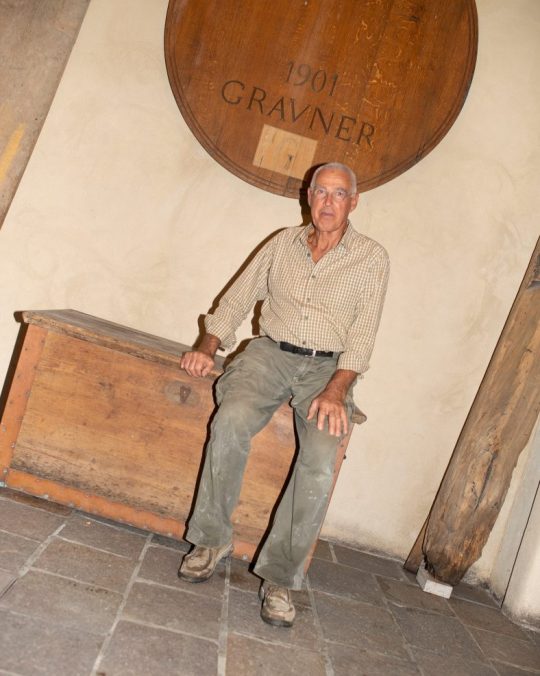

Josko and Mateja, thanks a lot for internet hosting us. I perceive that you simply haven’t been keen on the time period pure wine for fairly a while, and but, Gravner is also known as a pure wine pioneer. How does this sit with you?
Josko Gravner: We aren’t massive followers of definitions or labels as a result of all of them, over time, tackle meanings that don’t have anything to do with their origin and preliminary intention.
For me, what I do right here just isn’t vogue. Those that simply make orange wine as a result of the market suggests it can most certainly focus elsewhere when the style modifications, though I’m satisfied that there’ll at all times be many producers on the market that can stand with their toes on the bottom whereas they make wine. Sure, I make my wine with all issues in the direction of nature, and sure it’s clear that there’s a distinction between industrially-made wines and good wine. Previous that, what defines a pure wine?
I don’t like to speak about pure wine, and particularly not when suggesting a wine solely as a result of it’s pure, because it implies that every one different wines have a questionable relationship with nature. I make wine, wine so simple as attainable and at this second, my cellar operates with three kilowatts of electrical energy, or moderately 4, as a result of I just lately added a extra highly effective peristaltic pump. However I am pleased with this, as I ought to be, proper? However I’m not satisfied we’re defining pure wine this fashion.
Following fashions additionally means being extra engaging to the market—which requires a sure kind of product that we aren’t targeted on. Ultimately, it isn’t for me to assert a pattern or duty for some motion for nothing as a result of I merely make wine that I consider in and that I wish to drink.
Mateja Gravner: And to do one thing since you have been satisfied by somebody or a market and you do not perceive the explanation, doing so doesn’t have the identical impact on you or on what you make and do.


One outstanding and controversial factor of “pure” winemaking is using sulfur to protect the wine. Why is it vital so that you can use sulfur throughout winemaking?
JG: For my part it’s important. Within the ’90s my objective was to remove sulfites as effectively, however I noticed that utilizing nothing didn’t work. It was not an untested ideology or principle I made a decision on.
Through the fermentation of the grape should with indigenous yeasts, the should produces small portions of sulfites anyway, so in the long run, it doesn’t make sense that very small quantities are such a severe act. In these years I made winemaking assessments with only a few added sulfites and every time I discovered that the sulfites that I added relieved the wines compared to the aggressive outcomes I discovered when not including any in any respect. However I’ll say that the wines with very small doses of sulfites have been far superior to these I used so as to add bigger doses. Realizing how you can make wine contains understanding how you can use sulfites by including the naked minimal.
The Romans, already over two thousand years in the past, had understood this idea and had began including sulfites of their wines to enhance their high quality.
Now there’s a worry of sulfites and lots of customers search for wines made with out including sulfites, however they don’t take a look at fish, fruit, greens (together with natural); all preserved with merchandise bearing the initials E252. In fact, this doesn’t imply that the sulfites should be added with a light-weight coronary heart however should be thought of as a complete of every part we eat and never simply demonizing wine with sulfites added.
After seven years of getting old, the wine is bottled with about 60-70 mg/L of whole sulfites. Definitely, if I bottled after two years I might cut back the entire amount of sulfites, nonetheless seven years of refinement to mature the wine can require (within the decanting phases) just a few extra milligrams of sulfites. I actually consider that it’s value having the milligram extra of sulfites in wine that has really matured compared to a wine that was made in a rush, possibly in metal, and bottled three to 4 months after the harvest.
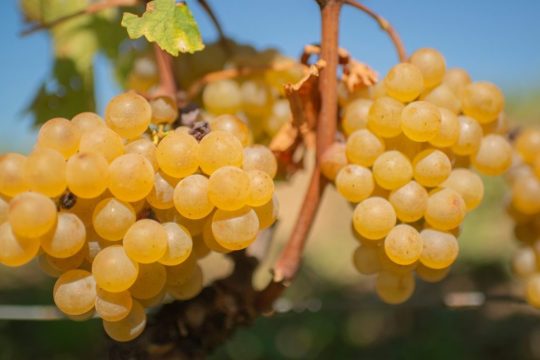

After your journey to go to California winemakers in 1987, you returned disillusioned and conflicted about the way forward for wine. Since that time, you’ve made an unusually massive tally of drastic modifications to your loved ones’s historic cellars and vineyards.
JG: Sure, to get to the supply of the wine.
Was it one thing from that journey that drove you to make these modifications? What was the explanation or what have been your ideas when making these alterations to your routine?
JG: Finally I attempt to perceive and assist nature, with out forcing it to permit it to precise itself higher.
I began making wine after my father, however he solely used massive barriques for winemaking. We moved to fermenting in stainless-steel, however it was clear to me that cellar temperature management was additionally wanted as a result of the tanks are inclined to fluctuating temperatures. If man has been making wine for 5 – 6 thousand years, it’s clear that it was accomplished with out electrical temperature management.
From there I went to remove the brand new oak barriques. For some motive, the barrique has been utilized in areas the place there may be speak of the significance of terroir… however then the vessel is used so as to add tannins and add the toasted observe of the barrique that covers any distinct side of terroir. From that then I went to the picket vats for fermentation and maceration, after which from the picket vats for maceration to the amphorae. At that time, I felt I had closed the circle of my searches.
When new know-how that didn’t but exist is made the means for fulfillment, it’s born, after which dies, as one other new one which’s much more “helpful” is born. The earlier conventions will at all times be put apart. As a consequence, I mentioned to myself, “Let’s go and search for clear water within the river; not the place it meets the ocean, however the clear water from the mountain; from the supply.” The amphora was born 5,000 years in the past, and in these 5,000 years, with all of those “improvements,” we’re previous the mouth the place the water is already polluted.
Throughout my journey to California in ’87, I understood how the world of wine works. [Things like] market analysis… I don’t wish to offend anybody, as a result of it was a brand new world of wine in California the place they tried to seize the eye of the Coca Cola customers, and due to this fact market analysis was a precedence at that second. I noticed that there have been even faculties that have been financed by chemical and oenological firms that had the necessity to create younger graduates who in the long run turned their brokers of sale of merchandise that shouldn’t be used for wine.
On prime of that, the place there was as soon as corn, a farmer randomly determined that they wished to construct vines. For my part, there are locations appropriate for viticulture and locations not appropriate. It’s clear to me that the vine both makes it by itself or if not, change the crop. Moreover the atrocities of commodification and manipulation I witnessed in cellars, there was additionally irrigation used all over the place in vineyards and chemical sprays getting used to stop indigenous species from occupying their very own terrain; a state of full disregard in the direction of nature.
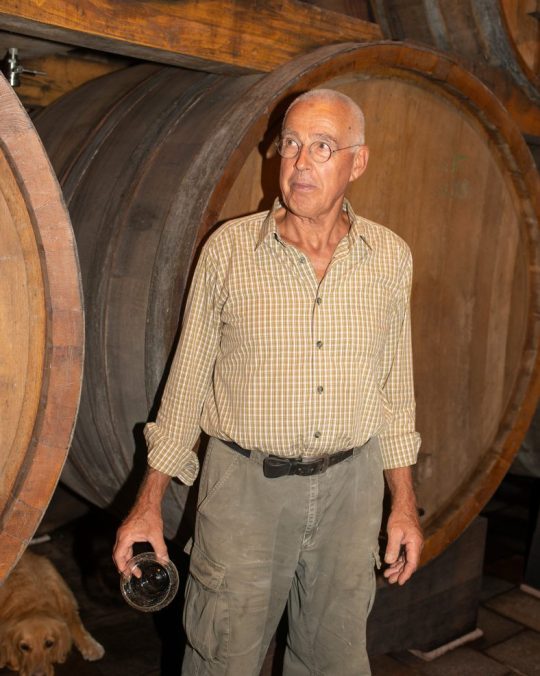

At that second I mentioned, “I wish to make wine, not market analysis. I wish to make wine that’s good, after which there will likely be a client who’ll agree with us.”
I approached this piano piano [slowly, slowly] as a result of going in opposition to the present to do issues that the world doesn’t settle for willingly is troublesome, is not it? Particularly for gross sales. I mentioned it earlier than however it is vitally vital that wine should above all please me. If I prefer it, it has already taken an excellent step, however then that is additionally to be understood by the patron.
You both change into an industrialist or you’re a farmer. If you’re a farmer, you must do issues as they need to be accomplished, with out intervention with out altering the uncooked materials. This entails an immense quantity of labor within the winery, ready for the harvest for a very long time, and harvesting solely the best high quality of your manufacturing.
For instance, it’s clear that the 2011 classic is a good classic, however 2012, which is lower than a classic as a result of we tried to gather the small quantity that 2012 gave us, is nothing much less. I noticed that every one the vintages are nice, even when the hail arrives as a result of we’ve got an open-air manufacturing unit… you must be prepared to simply accept every part with out intervening.
You add layers of beeswax to the within of your amphorae as noticed in conventional Georgian winemaking practices. In your opinion, what’s the good thing about this?
MG: It’s merely an pointless lack of wine amount: in contrast to wooden, the clay doesn’t stabilize the wine, and the wine will proceed to move by way of the pores within the amphora. Beeswax permits some oxygen to enter the amphora and through fermentation, to not point out that a minimum of six punch downs per day are accomplished in order that the fermenting yeasts at all times have sufficient oxygen.
What number of amphorae and barrels do you at present make use of?
MG: We now have a complete of 47 amphorae (between 1,300 and a couple of,400 l every).
Within the getting old cellar we’ve got 4 7.000L vats, 4 6,000L vats, 4 4,800L vats, three 4,000L barrels, eleven 3,400L barrels, one 2,000L barrel, 9 1,300L barrels, and eight 1,000L barrels.
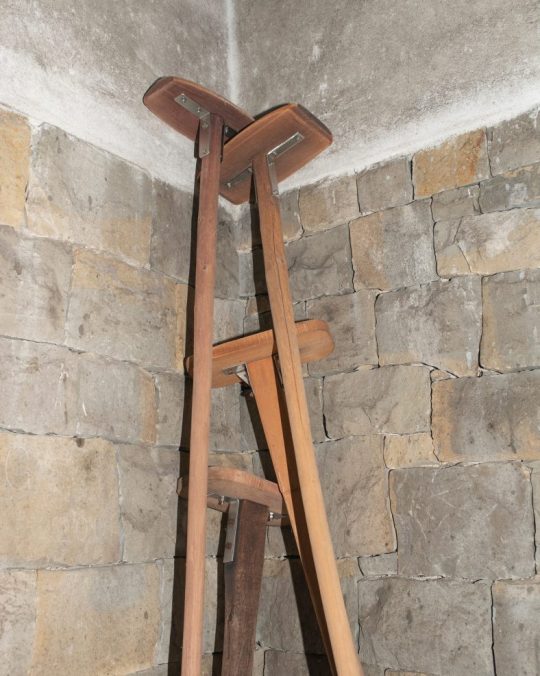

In 2007, you made the choice to not launch any wines till that they had aged seven years underneath your care How did that have an effect on the vineyard over the following seven years? What sort of sacrifices did you must make to mitigate the annual gross sales loss for seven entire years? Was it a spontaneous resolution or how did you put together for such a enterprise problem?
JG: The choice to increase the bottle refinement was made in 2005, when the primary classic fermented in amphora, 2001, got here out on the market. Since then, the discharge on the market of the next years has been, slowly and progressively, elongated, to bottle the 2007 classic in 2014.
It was an vital resolution, however the truth that we briefly distributed the financial dedication allowed us to face it. Let’s not overlook that such a protracted refinement drastically will increase the chance that one thing goes mistaken and that the choice and processing of the grapes should be meticulous.
There’s a surging market curiosity in amphorae-made wines, and it’s beginning to seem to be most Italian pure winemakers have a minimum of one amphora of their cantina. As one of many preliminary trendy advocates for using amphora in winemaking, how do you are feeling about all of the hype?
JG: Fashions have at all times been and at all times will likely be. Those that use amphorae as a result of they’re satisfied of their worth will proceed to take action, those that use them for vogue will quickly transfer on to another container or manufacturing system. It’s a matter that issues us little, in the long run, the standard speaks for itself.
The truth that there are extra producers to make and use them is sweet. We aren’t taken with being the one ones, and for the patron having extra selection is at all times good.
Alexander Gable (@mrgable) is a contract journalist based mostly in Milan. Read more Alexander Gable for Sprudge Wine.
Photographs by Sam Youkilis




















Alexander Gable
February 10, 2021
Source link
source https://fikiss.net/josko-gravner-the-sprudge-wine-interview/
Josko Gravner: The Sprudge Wine Interview published first on https://fikiss.net/
from Karin Gudino https://karingudino.blogspot.com/2021/02/josko-gravner-sprudge-wine-interview.html
0 notes
Photo

Discounts on single, half case, and full case orders! Join us and our friends from Proof Wine & Spirits as they share 3 delicious wines from their catalog: Zum Martin Sepp Grüner Veltliner 2018 Zum Martin Sepp is a small restaurant and inn located in Grinzing, a little town on the northern outskirts of Vienna. Michael and Freya Martin produce wine for the inn at Weingut Martinshof, their winery in the Weinvirtel. For generations, the region has supplied wine almost exclusively for the Viennese market, with little or none exported to other countries or even other parts of Austria. Michi Martin is one of the most dedicated winemakers you’ll find. Michi’s passion for his homeland’s champion grape is boundless, and he turns that passion into some of the freshest and tastiest Grüner around. Fresh, with clean citrus fruit and spirited acidity. Organic Practices, hand picked, hand sorting. Stainless Steel aging. Antica Masseria Vendetti Sannio Bianco 2016 Back in 1988, the Italian wine guide Gambero Rosso introduced the word organic for the first time, in its review of Venditti’s wines. Those who still believe that “organic” equals “unscientific” should think again. Nicola Venditti is both an enologist and the very incarnation of a contadino (farmer). The vineyards have been in the family for over 400 years — thus the “antica” part of Antica Masseria — and he is deeply passionate about his territory of Sannio, adjacent to better-known Taurasi. Nicola eschews oak and kneels at the altar of steel, thus letting all of the wines really show the clean and distinct fruit of their native grapes (some of which only he cultivates). His cantina is squeaky clean, and he gladly whistles out pH and acid levels for those inclined. This humanist-techno-geek approach, he explains, is a combination of the humanity of ancient methods and local varieties, together with the rationality offered by technology. Vigneti Massa Fuso Rosso It’s our kind of daily drinker: affordable, natural, minimally filtered, everyday-delicious wine from an interesting growing area (Colli Tortonesi). It’s a real wine for really good pizza or spaghetti. Plus, it’s a natural wine quality-price-ratio hero! (at Tip Top Daily Market) https://www.instagram.com/p/B1bmE4tJO61/?igshid=t6pydu7irj7i
0 notes
Text
Gambero Rosso Top Italian Wine Roadshow 2019
Gambero Rosso Top Italian Wine Roadshow 2019

CHIJMES HALL
30 Victoria Street, #01-28, Singapore 187996
Monday, 6 May, 2019; 12 pm to 7:30 pm
One of the world’s most-anticipated Italian Wine tours is returning to Singapore this year to celebrate and showcase Italy’s finest wine craftsmanship at Gambero Rosso’s exclusive one-day roadshow.
Opened to members of the wine fraternity as well as to the public, the prominent wine event will…
View On WordPress
0 notes
Text
Top Wines Of Italy - Selection of Gambero Rosso Tre Bicchieri Wines Part Three
Top Wines Of Italy – Selection of Gambero Rosso Tre Bicchieri Wines Part Three
Gambero Rosso was founded in 1986 as a food and wine magazine for a daily Italian newspaper. Today it has established itself as a global authority on Italian wines. They publish on an annual basis The Vini d’Italia guide reviewing 20,000 wines and more than 2,500 wineries each year. The result is a carefully curated selection of wines celebrated for the skilled craftmanship of their winery and…
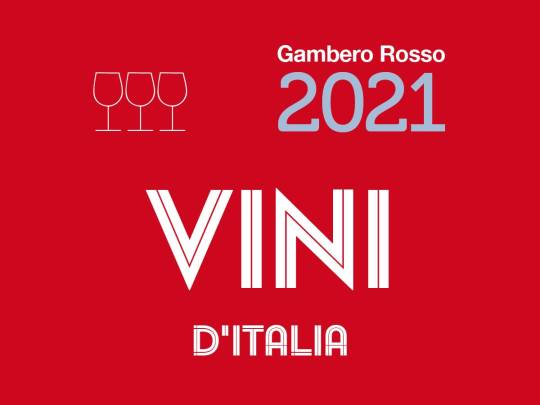
View On WordPress
0 notes
Photo
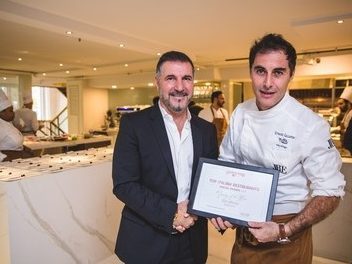
Don Alfonso does Toronto proud Gambero Rosso, leading company in the food and wine sector in Italy and Europe, recently named Liberty Entertainment Group’s Don Alfonso 1890 Toronto the ‘Opening of the Year,’ with the restaurant receiving Tre Forchette (3 Forks) — the highest rating available in their Top Italian Restaurants 2019 guide.
0 notes